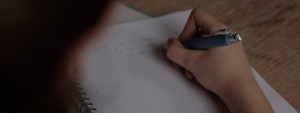Distributed Problem Solving
What is it?
Distributed problem solving is an instructional strategy that combines problem-solving with peer review and peer instruction. To employ this strategy, the instructor must prepare two or more versions of a problem addressing specific concepts/learning outcomes(s). Each different problem must feature subtle differences that students are expected to recognize. Each group of students begins to solve one of the problems but are not allowed to complete it. Instead, after a prescribed amount of time, they move on to a new problem and continue solving that problem. To do this, they must review the steps taken by the previous group, identify the differences between the problems, and work towards solving their new problem. The instructor can decide how many times to disrupt the problem-solving process and how many different problems each group will work on.
Purpose: With this strategy, the students have the opportunity to (a) work on multiple problems in a shorter timespan, (b) peer-review work conducted by their peers, and (c) decipher subtle differences in related problems.
Note: The technique works best in classrooms with multiple (a) interactive white boards or (b) dry erase white boards. In a traditional classroom, large sheets of paper or an online collaborative platform (e.g., SMART amp) can also be used. This strategy also works best in classrooms with ≤ 40 or so students.
Skills Promoted
- Problem solving
- Communication skills
- Co-regulation
- Analytical reasoning
- Decision-making
Who's using it?
SALTISE community members who use this strategy and are willing to share advice and/or resources.
| Institution | Discipline | Instructor | Classroom settings |
|---|---|---|---|
|
McGill Level: College/University |
Organic Chemistry |
Lecture room Classroom size: All sizes |
|
|
Vanier College Level: College |
Biology |
Active Learning Classroom Classroom size: 30-40 |
|
|
Dawson College Level: College |
Physics |
Active Learning Classroom Classroom size: 30-40 |
|
|
Dawson College Level: College |
Physics |
Active Learning Classroom Classroom size: 30-40 |
| Institution |
McGill Level: College/University |
Vanier College Level: College |
Dawson College Level: College |
Dawson College Level: College |
|---|---|---|---|---|
| Discipline |
Organic Chemistry |
Biology |
Physics |
Physics |
| Instructor | ||||
| Classroom settings |
Lecture room Classroom size: All sizes |
Active Learning Classroom Classroom size: 30-40 |
Active Learning Classroom Classroom size: 30-40 |
Active Learning Classroom Classroom size: 30-40 |
Why use it?
The more obvious benefit to distributed problem solving is that I get to expose students to more problems in less time. It really increases problem solving efficiency. Also, given that the problems students work on always feature subtle differences, they learn to (a) effectly identify the differences and to (b) adapt their problem solving approaches accordingly. Recognizing the similarities and differences in multiple problems helps them to achieve a deeper understanding of the material.
Furthermore, students are forced to assess each others work. They take on the role of the instructor in clarifying what they are doing to their peers. I often see students engaged in discussions as the two groups request explanations and clarifications from one another. Thus, there is a productive peer-review process incorporated into the strategy
(J.F. Brière, Dawson College).
The biggest challenge in effectly implementing the distributed problem solving strategy is selecting problems at the correct difficulty level. If the selected problems are too easy, students may finish them too quickly, precluding any collaboration. If the problem is too difficult and nothing correct is written on the board, productive collaborations will be hindered as students can’t go forward (i.e., they can’t help one another). When in doubt, I tend to lean towards more difficult problems as there will at least be some discussion. Furthermore, scaffolding can be provided as required based on the instructors observations. Overall, the instructor should ensure to budget sufficient time in selecting the best possible problems.
A second challenge for instructors is to keep oneself from intervening too quickly, even if students are clearly going in the wrong direction. One must let things go so that the second group can comment on and potentially rectify the previous groups work. The second group then has the opportunity to explain to their peers where they went wrong. This is very powerful. Should the second group of students attempting the problem continue in the wrong direction, then the instructor may wish to intervene
(J.F. Brière, Dawson College).
Ready to try it out?
Distributed problem solving generally requires the following distinct steps:
STEP 1: Instructor prepares sets of equivalent problems (ideal number depends on number of groups to be formed).
STEP 2: Instructor divides the class into small groups (ideally 4-6 students each) and assigns each group to a shared writable surface – e.g., dry- eraser whiteboard, interactive boards.
STEP 3: Instructor assigns one problem for each group.
VARIATION: for larger classes with more groups: assign the same problem to several groups.
STEP 4: Groups begin the problem solving process making sure to record their worked solutions on the shared writable surface – e.g., Group 1 working on Problem A, Group 2 working on problem B, etc.
STEP 5: Instructor interrupts the process and has students switch problems and take up another group’s problem-solving process – e.g., Group 1 moves to Group 2’s problem B, Group 2 moves to Group 1’s problem A.
OPTION: groups switch problems only when the problem solving is completed.
STEP 6: Groups review and revise the problem solution of the first group and decide how they will continue the problem solving process.
STEP 7: Instructor interrupts the process and instructs groups to return to their original problem and evaluate the completed solution.
STEP 8: Groups review and evaluate the original solution to the original problem – e.g., Group 1 returns to problem A, which was completed by Group 2.
STEP 9: Instructor evaluates all responses with the class, highlighting any errors and distinct procedures for arriving at correct solutions.

Strategy Workflow
Helpful resources
References
Carnmarata, S. and McArthur, D. (2014). Strategies of cooperation in distributed problem solving!. The Defense Advanced Research Projects Agency.
Durfee, E. H. (2001). Distributed problem solving and planning. Multi-agent systems and applications, University of Michigan, Springer.
Arnseth, H. C and Ludvigsen, S. (2001). Collaboration and problem solving in distributed collaborative learning. European Perspectives on Computer-Supported Collaborative Learning, CSCL Proceedings..
Deek, F. P. (2002). A distributed learning model for problem solving and program development. Espinosa-E-Learn: World Conference on E-Learning in Corporate, Government, Healthcare, and Higher Education.
Orrill, C. H. (2002). Supporting online PBL: Design considerations for supporting distributed problem solving. Distance Education, Taylor & Francis.
Kaplan, C. A. (2006). Method and system for asynchronous online distributed problem solving including problems in education, business, finance, and technology. Google Patents.
Fiore, S. M., Cuevas, H. M., Scielzo, S. and Salas, E. (2002). Training individuals for distributed teams: Problem solving assessment for distributed mission research. Computers in Human Behavior, Elsevier.






